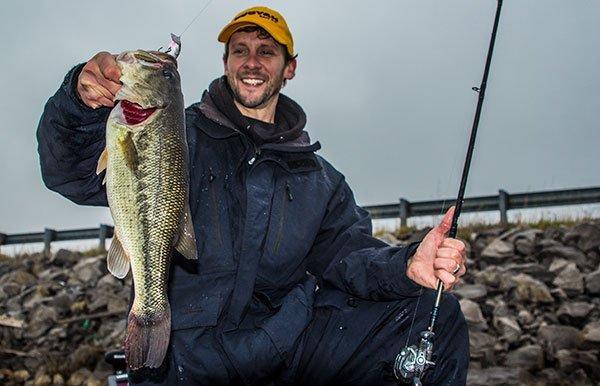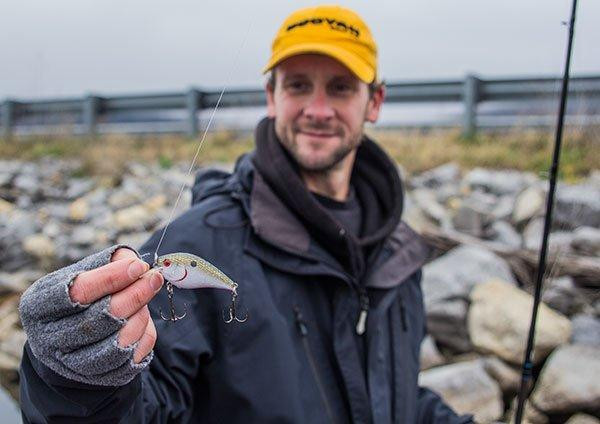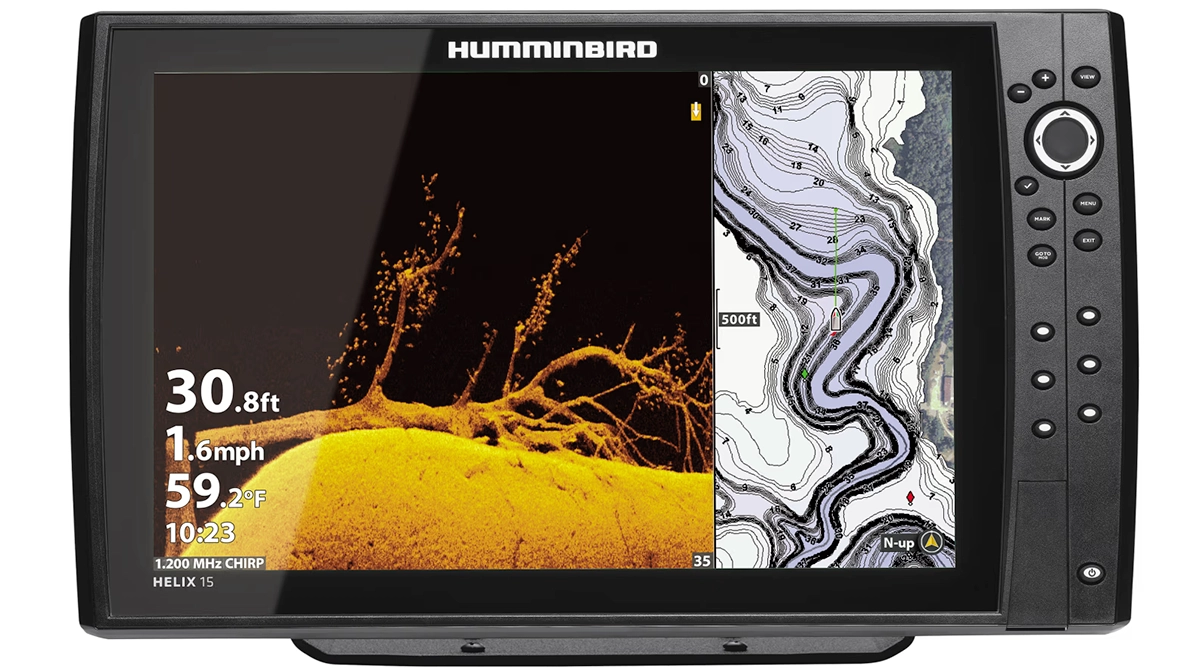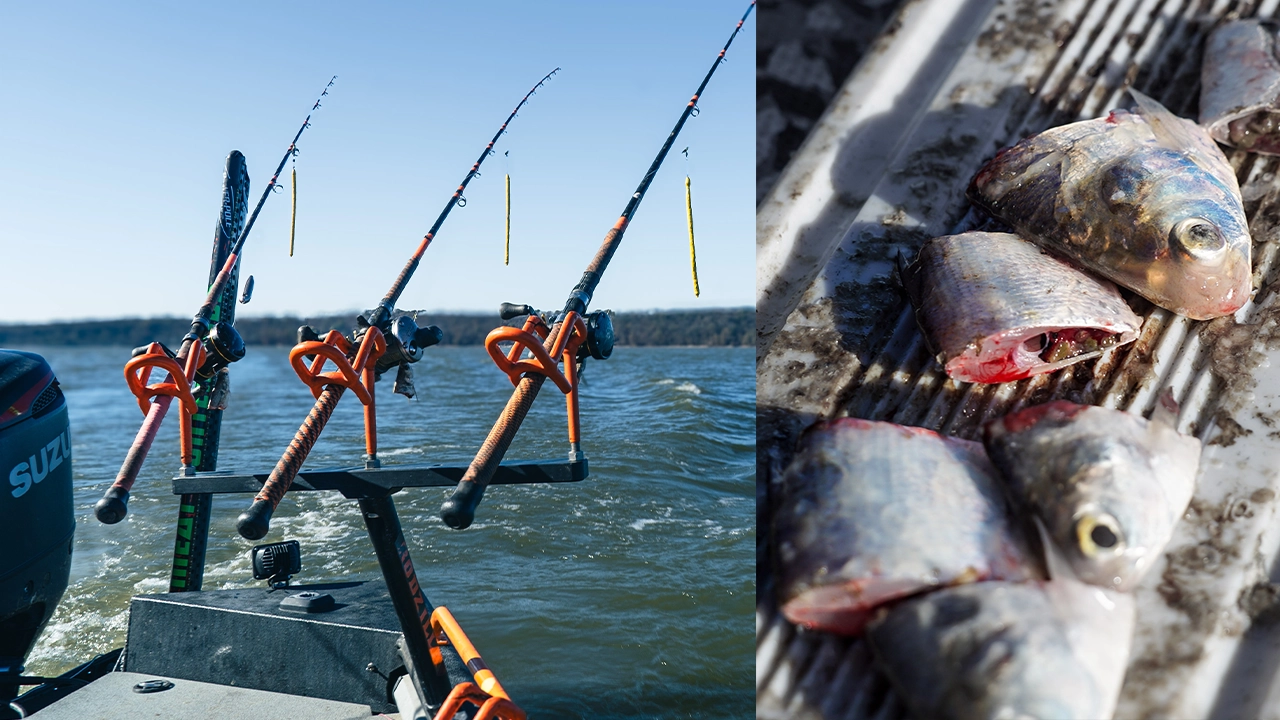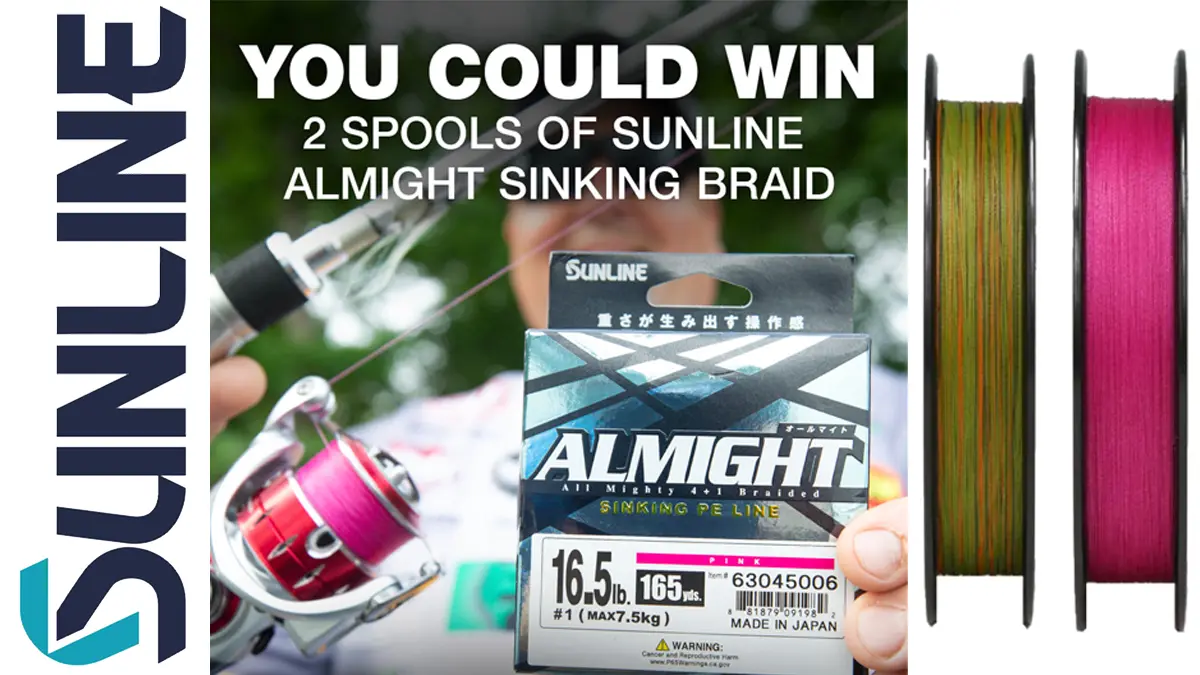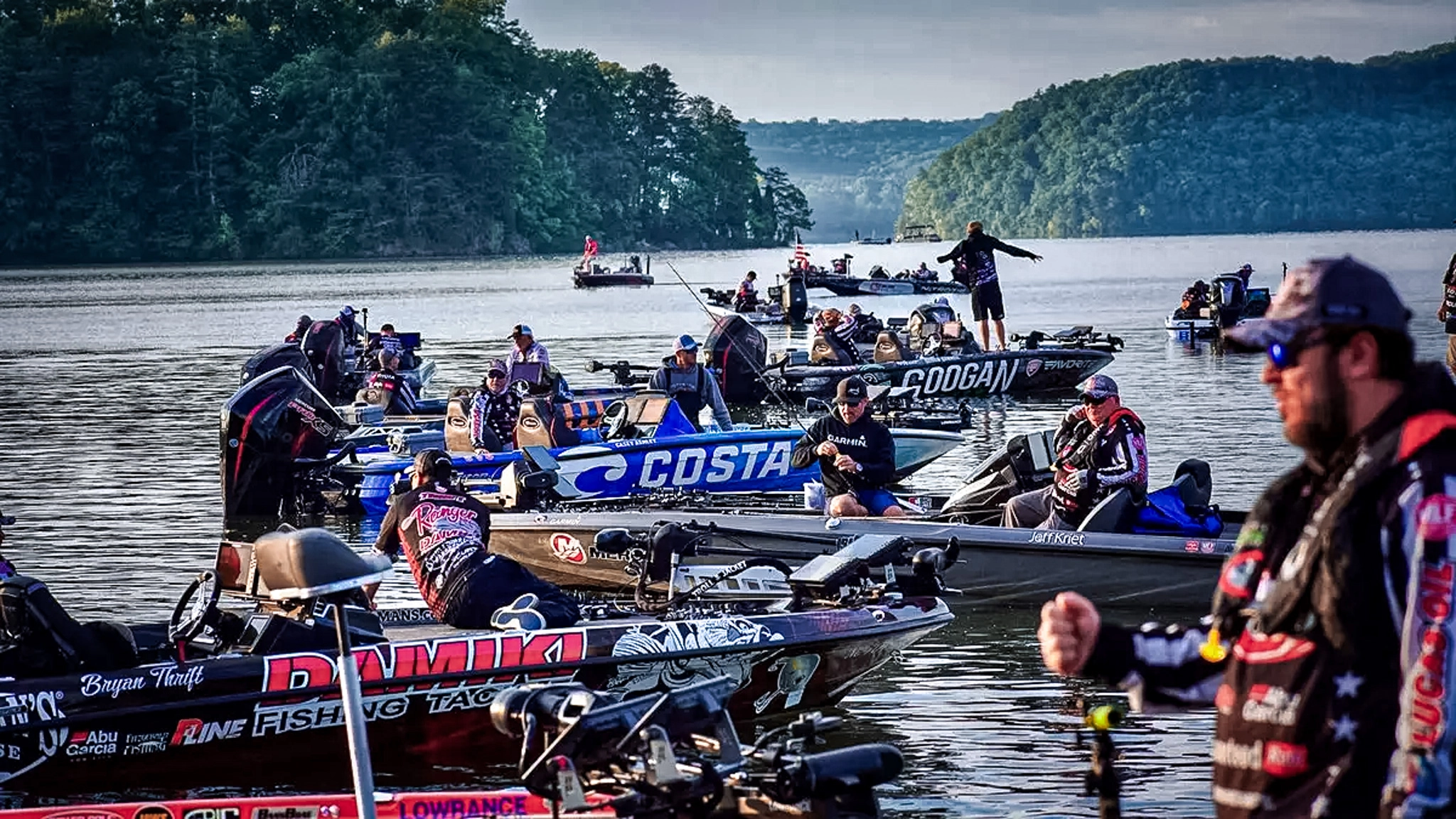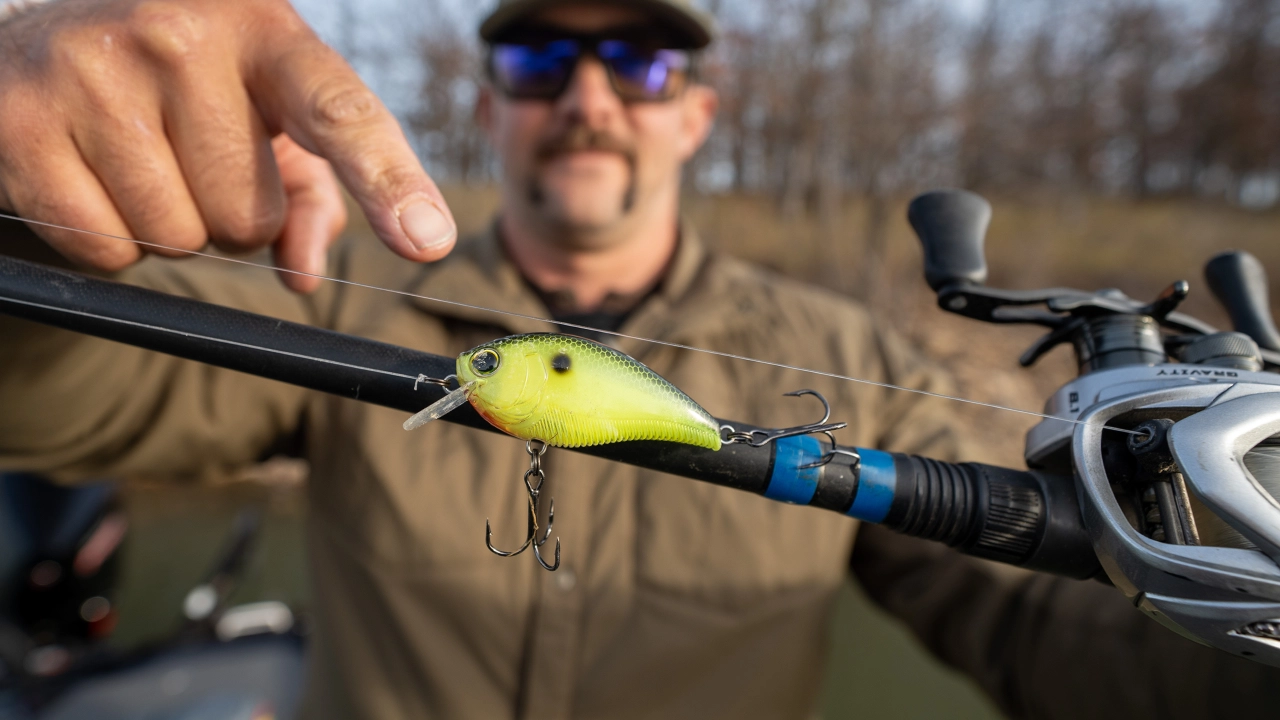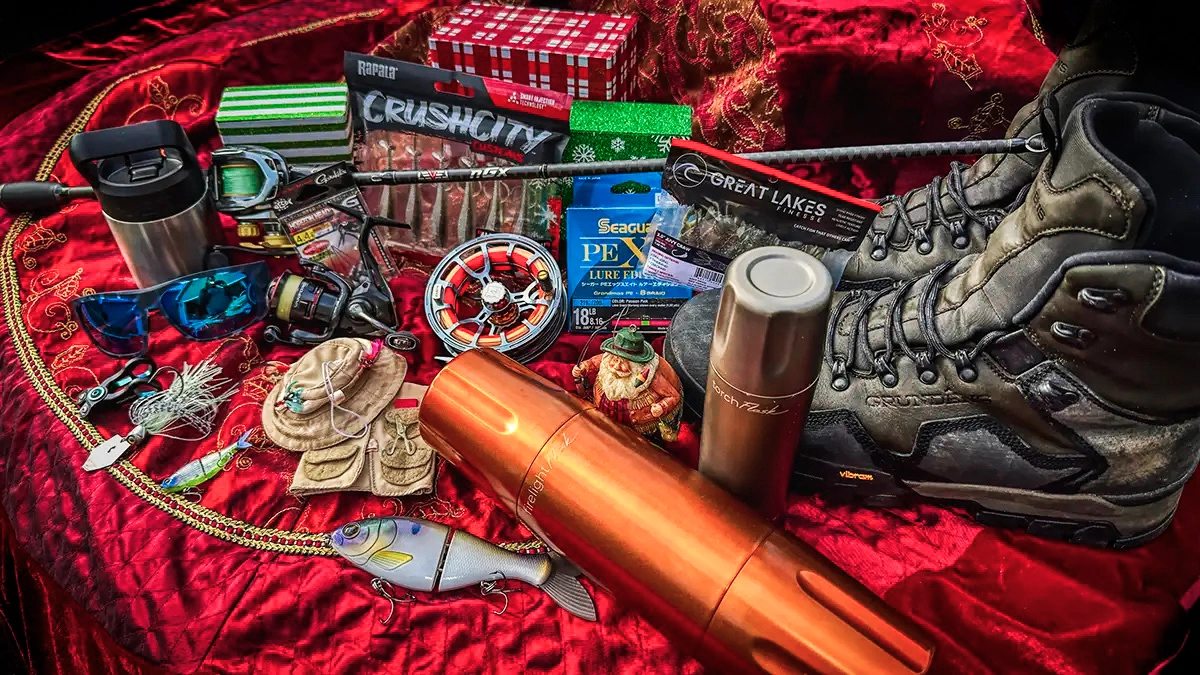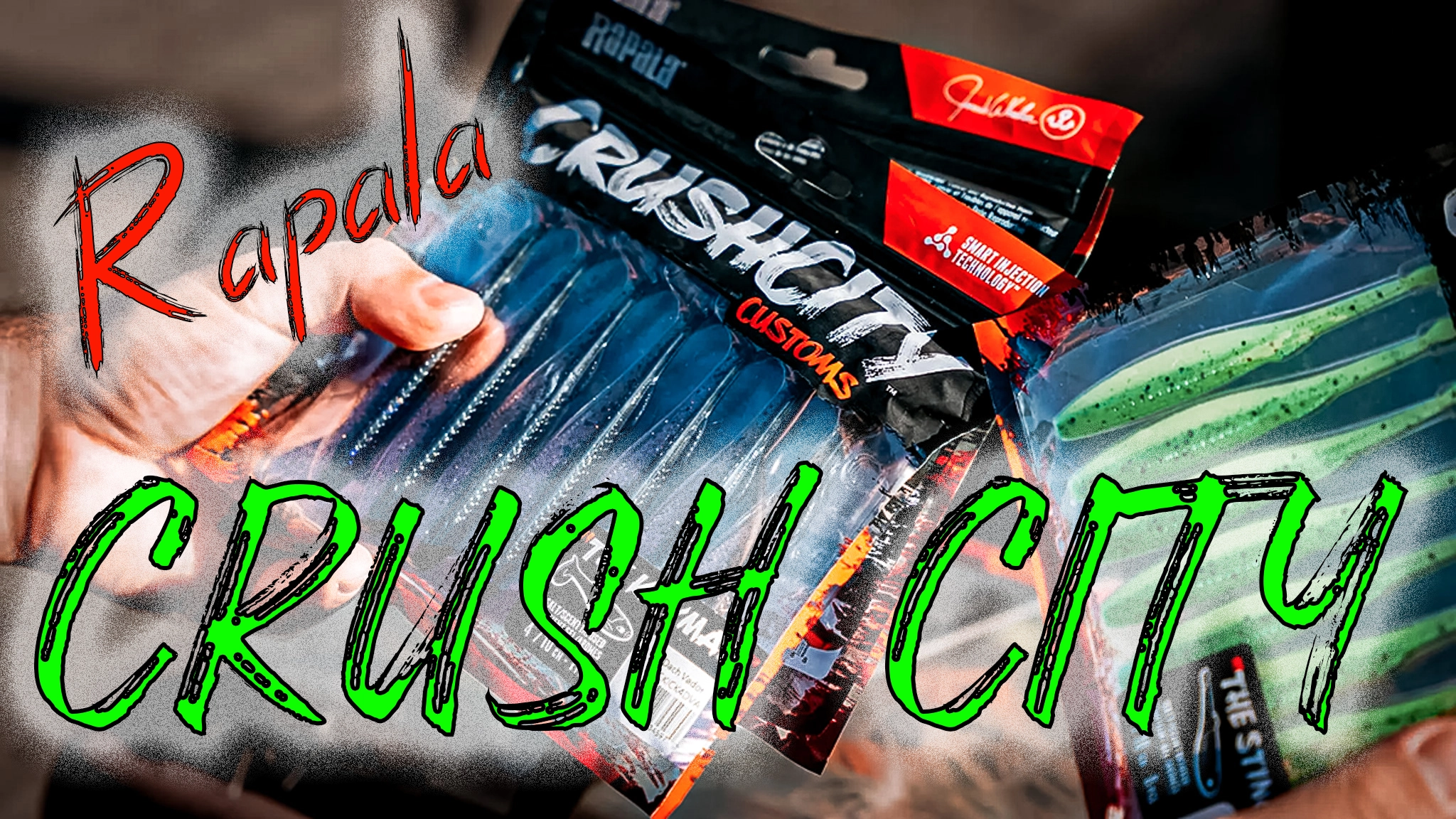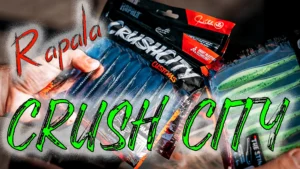Wintertime bass can be difficult to pattern but riprap offers anglers an outstanding alternative when the bass won’t cooperate. Regardless of the conditions or mood of the bass, fishing riprap with crankbaits is a solid fallback pattern that can salvage an otherwise subpar day on the water.
2014 Bassmaster Classic qualifier and FLW Tour pro Patrick Bone has some of his best winter fishing days cranking riprap. Although these rocky areas can quickly turn into “community holes” when the fishing turns sour, he implements six techniques that allow him to catch bass despite the increased fishing pressure.
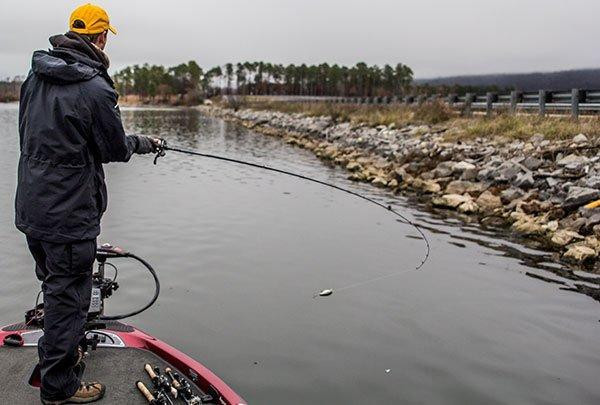
1. Parallel is the only way to go
It doesn’t really matter where you’re throwing a crankbait—your success will be largely dependent upon the length of time the lure stays in the most productive strike zone. Whether he’s cranking up-close and personal to the riprap or keeping a healthy distance, Bone makes a concerted effort to keep his crankbait parallel to the rocks.
“Paralleling riprap is the biggest key to getting more bites,” Bone said. “If you’re casting directly perpendicular to the rocks, you’re really short-changing yourself because your crankbait will only be in the strike zone for the first two or three cranks. If you simply change your angle, you’ll be amazed by the number of big bass you’ll catch.”
In order to achieve an ideal angle, it’s important to pay close attention to your boat positioning. If you’re fishing by yourself, Bone suggests placing your boat parallel to the riprap and casting directly in front of the boat. Not only does this make it much easier to keep your crankbait in the strike zone, but it also allows you to cover water much more efficiently.
If you’re fun fishing with a buddy or you’ve drawn a co-angler in a tournament, don’t worry—there’s still a way for both of you to enjoy productive casting angles.
“I always want the people in the back of my boat to catch fish,” Bone said. “To avoid front-ending them when I’m cranking rip rap, I simply kick my MotorGuide trolling motor away from the rocks, positioning the boat at a 45-degree angle. It gives me all the room I need to keep my bait parallel and my co-angler isn’t stuck casting behind the boat.”
2. The wind is your friend
How many times have we heard professionals stress the importance of wind in crankbait fishing? Although it’s drilled into our brains on a regular basis, some of us still ignore it. It can definitely be obnoxious to fight a stiff breeze on every cast, but if you learn to embrace it, your success will skyrocket.
Quick tip: Casting into the wind will increase your chances of success. Bass will face into the wind to take advantage of easy meals, so this will make your presentation more natural and will give the bass more time to see and react to your lure.
“I always like to fish the windblown side of riprap,” Bone said. “I don’t really buy into the theory of wind positioning baitfish—I’ve never seen it push wads of bait onto the bank. I do believe, however, that wind stirs everything up and makes bass position in predictable places.”
If you’re fishing in clear water, wind is almost imperative for a solid cranking bite on riprap. When you really think about it, there are a lot of unnatural characteristics on crankbaits—hooks, bills, split rings and rattles to name a few. Wind impedes the bass’ vision, making these essential crankbait features less visible.
“No matter what kind of crankbait you’re throwing, wind is going to help a clear water crankbait bite,” Bone said. “If it’s really calm and a crankbait comes buzzing by a bass’ face, they may not eat it if they get too good of a look at it. In windy conditions, however, the profile of the bait is distorted which makes it look much more natural to an old, smart bass.”
3. Always look for irregularities
Whether you’re fishing grass lines, docks or seawalls, bass love and relate heavily to irregularities. Anytime you have a straight line of cover, anything “different” is considered a high-percentage area. This is no different when cranking riprap, according to Bone.
“It’s always important to look for irregularities in riprap,” Bone said. “It could be a floating log that got washed against the rocks, a random patch of grass or even a big boulder. Anything that gives nearby bass an additional ambush spot to attack prey should never be overlooked.”
When you find an abnormality in riprap, it’s good practice to make repeated casts to it. Start by making long casts parallel to the cover followed by several casts from different angles.
“Bass will position very predictably on these irregularities and it’s often in accordance to the wind or current direction,” Bone said. “Focus on any current eddies—or slack, calm water—the cover creates because the bass will sit in these areas waiting to attack unsuspecting prey.”
4. Experiment with your color selection
Because cranking riprap is widely considered a bailout strategy for tournament anglers, bass see dozens, or sometimes hundreds of crankbaits each week. For this reason, it’s important to constantly experiment with different colors.
Bone’s recommended gear for shallow riprap:
-
-
-
Rod: 705CB Dobyns Champion Glass Cranking Rod
-
Reel: 6.4:1 Lew’s Tournament Pro Speed Spool Casting Reel
-
Line: 15-pound Seaguar InvizX
-
Lure: 100 Series XCalibur XCS Square Lip Silent Crankbait
-
-
“I definitely like to use shad-colored crankbaits, but if it has a red or orange tint to it, you bet I’ll throw it a lot,” Bone said. “Shad aren’t the only type of bass prey that lives around riprap—you’ll see a lot of crawfish and bluegill hanging out, too. If you’re having a hard time getting bites on shad-colored crankbaits, switch it up and see if the bass are keyed-in on a different kind of forage.”
5. Don’t forget about the corners
All too often anglers will crank a stretch of riprap only to abandon ship before thoroughly dissecting the corners. While you run the risk of possibly making a wayward cast and shattering your favorite crankbait on the nearby bridge—don’t ask me how I know—ignoring these productive areas can result in fewer fish catches.
“The corners of riprap are definite hotspots for big bass,” Bone said. “Going back to what we discussed earlier, the corners act as irregularities—they break up the straight, continuous line of rocks a provide bass with an awesome ambush spot. They can hide around the corner and attack all types of forage as it passes by.”
In most instances, the large majority of riprap you’ll find will be located around bridges. These bridges often act as pinch-points for the bass, bottlenecking two separate pools of water. In order for both bass and their prey to travel between the two areas, they become concentrated on the corners. Anytime there’s a large concentration of bass, you have a great chance of fooling them with a crankbait.
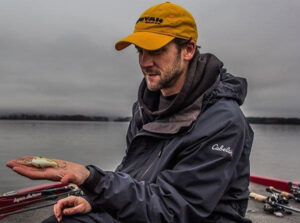
6. Sometimes you need to back off
Many of us have problems casting to things, or fish, we can’t see. Whether it’s a confidence issue or a matter of habit, we’ll never really know. Although it’s tempting to hug the bank when cranking riprap, never underestimate the power of backing off into deeper water.
Bone’s recommended gear for deeper riprap:
-
-
-
Rod: 704CB Dobyns Champion Cranking Rod
-
Reel: 5.4:1 Lew’s BB-1 Speed Spool Casting Reel
-
Line: 12-pound Seaguar InvizX
-
-
-
“The bass won’t always be close to the bank,” Bone said. “Many times they’ll be five or ten feet away from the rock, directly underneath your boat. Their position will change several times throughout the day, so it’s important to keep them honest. Riprap is nothing more than hard, vertical cover that gives bass the opportunity to easily move up and down throughout the water column, so even though they were on the rocks yesterday doesn’t mean they’re not in 15 feet of water today.”
To get a better grasp of riprap, think of it like an iceberg—you can only see about a small portion of it with the naked eye. The rocks often protrude into the water a reasonable distance, so don’t be surprised if the bass are positioned on the deeper, less visible rock.
“I see it all the time—the fish will sit right where the chunk rock ends and transitions into a natural bottom,” Bone said. “For this reason, I always want my crankbait touching the rocks at some point in my retrieve. I constantly watch my Lowrance and if I’m not getting bit, I target different depth zones until I find a population of active fish. Even though I may be off the bank, I’m still casting parallel the entire time.”
If you’re having a hard time locating winter bass this year, don’t be afraid or too prideful to crank riprap. Sure—everyone does it, but these simple tips will help you differentiate your presentation from other anglers’ and will lead to a lot of fun, coldwater fish catches.


